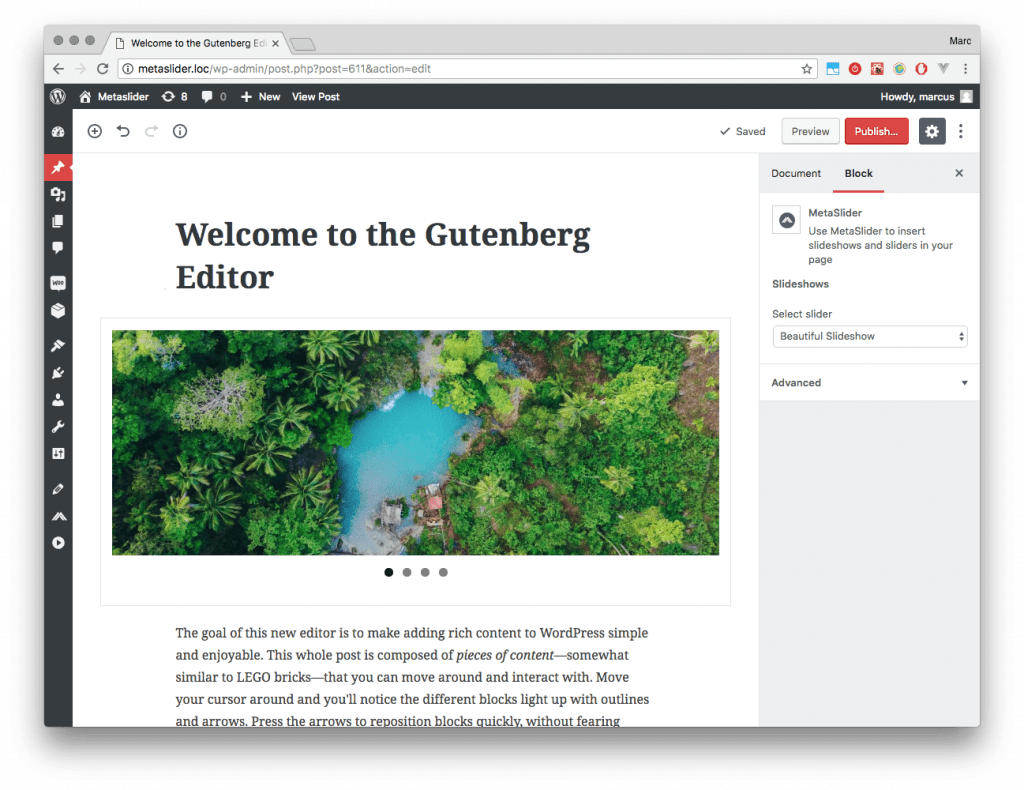WordPress has developed a new editing experience, which it humbly named Gutenberg, “after another invention that revolutionized publishing.” According to its website, Gutenberg will make a big difference to how everyone– users, developers and hosts- interacts with WordPress.
What is Gutenberg?
The Gutenberg editor makes rich website-building even simpler and more intuitive so that just about anyone can publish content, regardless of whether they have any technical knowledge or can even write code.
Instead of different, inconsistent ways of creating custom content, Gutenberg uses various types of content blocks (e.g. text, videos, images, quotes, etc). Users can add blocks individually, filling each one with content as they go along and then positioning them in exactly the right position, rather than creating all content in one big editorial field. Creating content this way makes it much easier to tell as you’re going along how content in the front-end will look.
Gutenberg will be much more in line with modern coding standards and aligned with open web initiatives. Development is still underway, and there’s a fair bit of concern in over the inevitable difficulties involved with the entire WordPress community getting used to such a massive change. However, disruptive innovation is necessary if technologies don’t want to be left behind.
The bottom line is that soon, Gutenberg will become a part of the WordPress core, replacing TinyMCE as the default content editor on every up-to-date WordPress website. If all goes to plan, it will be a revolutionary innovation that will change everything about website-building for the better.
How is UpdraftPlus adapting our plugins?
We at UpdraftPlus couldn’t ignore Gutenberg for our MetaSlider slideshow plugin. Whilst most of our plugins are backend, MetaSlider affects the front end so needs adapting.
So we’re currently working hard to ensure that Metaslider is entirely compatible, working with blocks that you can easily drag and drop anywhere on the page. Pretty cool, eh?
